Stereum gausapatum
Scientific name: Stereum gausapatum (Fr.) Fr.
Derivation of name: Ster- means "tough, firm, solid."
Gausap means "shaggy woolen cloth," in reference to its
appearance.
Synonyms: Thelephora gausapata Fr.
Common name(s): Bleeding oak crust
Phylum: Basidiomycota
Order: Russulales
Family: Stereaceae
Occurrence on wood substrate: Saprobic; resupinate
to effuse-reflexed or forming sessile, often overlapping caps
on stumps, logs,
and branches of
hardwoods (almost
exclusively oak);
annual, spring
through fall.
Dimensions: Individual resupinate fruit bodies 1-6 cm in
diameter; laterally fused caps forming coalesced structures
9-10 cm
or more broad, 2-3 cm deep.
Sterile upper surface: The upper surface is pubescent
and zonate with brownish, orange, beige, yellowish, or black
bands and often a whitish margin. The margin typically
becomes wavy or curly.
Fertile lower surface: The wrinkled to smooth lower
surface is colored various shades of brown, orange, pinkish-
buff to clay and turns
dark reddish where injured.
Comments: This is one of the "bleeding" Stereum species.
Stereum sanguinolentum (Figure 11) is another bleeding
species reported to grow on
conifers. Specimens of bleeding
Stereum species often just
bruise dark or reddish where
injured
rather than actually "bleed." Fresh, young
specimens
may
exude a reddish liquid
where injured.
It is worth noting
that old specimens of bleeding oak crust do not bleed and can
only be separated from their non-bleeding relatives through
microscopic analysis.
More information at MushroomExpert.com:
More information at TomVolkFungi.net:
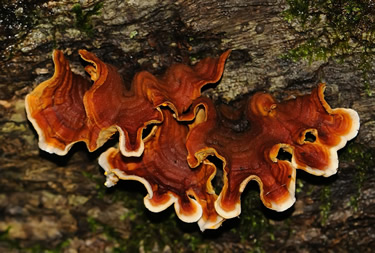
Figure 1. Brownish, zonate specimens of Stereum
gausapatum. Note the whitish margins.
Photo © Richard Orr.
%20@%20MPEA%20Richard%20Orr.jpg)
Figure 2.
Smooth lower surface with reddish discoloration
typical of
a "bleeding" Stereum species.
Photo © Richard Orr.
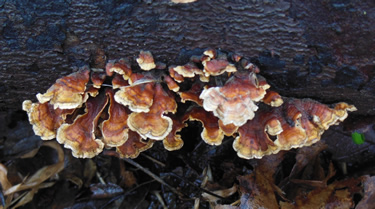
Figure 3.
Overlapping caps and "curly" margins are evident
in these specimens of bleeding oak crust.
Photo © Dorothy Smullen.
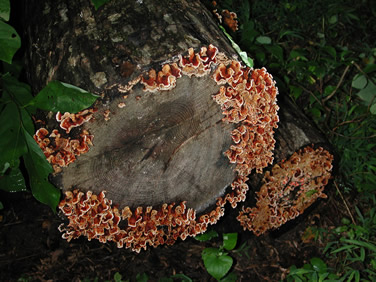
Figure 4. Profuse fruiting of Stereum gausapatum on the cut
end of an oak log.
Photo © Joanne Solem.
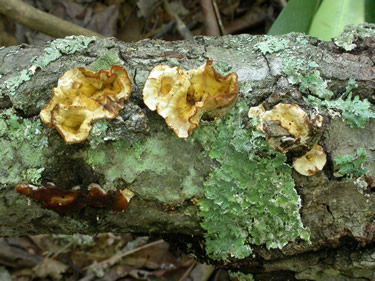
Figure 5. A much younger specimen of Stereum gausapatum
on a fallen oak limb.
Photo © Gary Emberger.
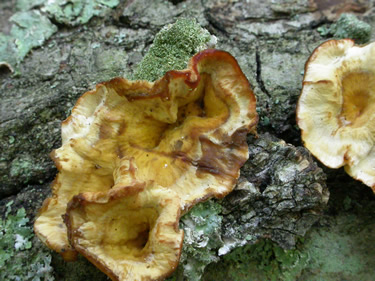
Figure 6.
A closer view of the specimen in Figure 5. This
young specimen was identified as Stereum gausapatum
after observing
the reddish discoloration of the bruised margin
and
flesh of
the fungus. Photo © Gary Emberger.
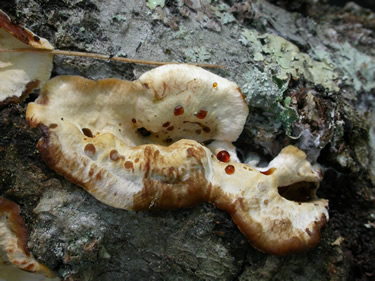
Figure 7.
Another specimen on the same branch as Figure 6.
In addition to the dark brown/reddish bruised areas,
several
droplets of reddish-colored liquid are exuding from its
surface.
Photo © Gary Emberger.
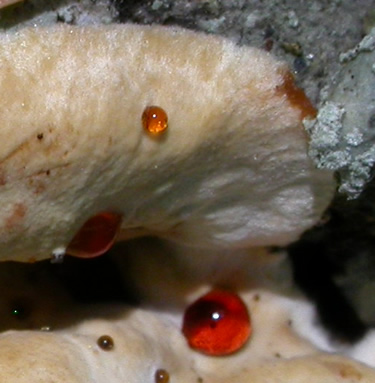
Figure 8. Reddish droplets were observed on several
specimens of Stereum gausapatum on the oak limb
photographed in
Figures 5-7.
I suspect droplets like these
only form on
very young,
fresh specimens.
Photo © Gary Emberger.
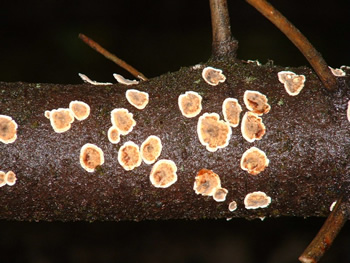
Figure 9. These completely resupinate specimens of
Stereum gausapatum show the brownish/orange
coloration and paler margin typical of the species.
Photo © Rick van de Poll.
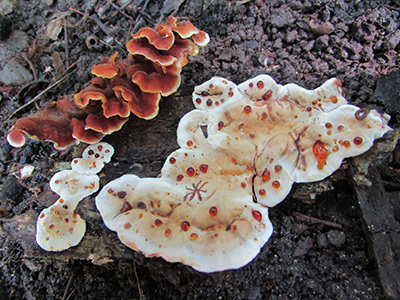
Figure 10. Stereum gausapatum on oak in NJ. In addition to the
reddish droplets, note the "bleeding" asterisk cut into the fertile
surface. Photo © Maricel Patino.
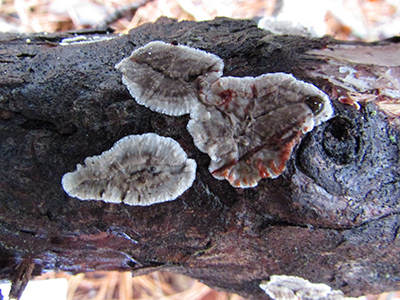
Figure 11.
Stereum sanguinolentum, another of the bleeding
Stereum species, growing on white pine in NJ. Note the reddish
coloration associated with the cut and bruised areas of the
fruitbody on the right.
Photo © Maricel Patino.